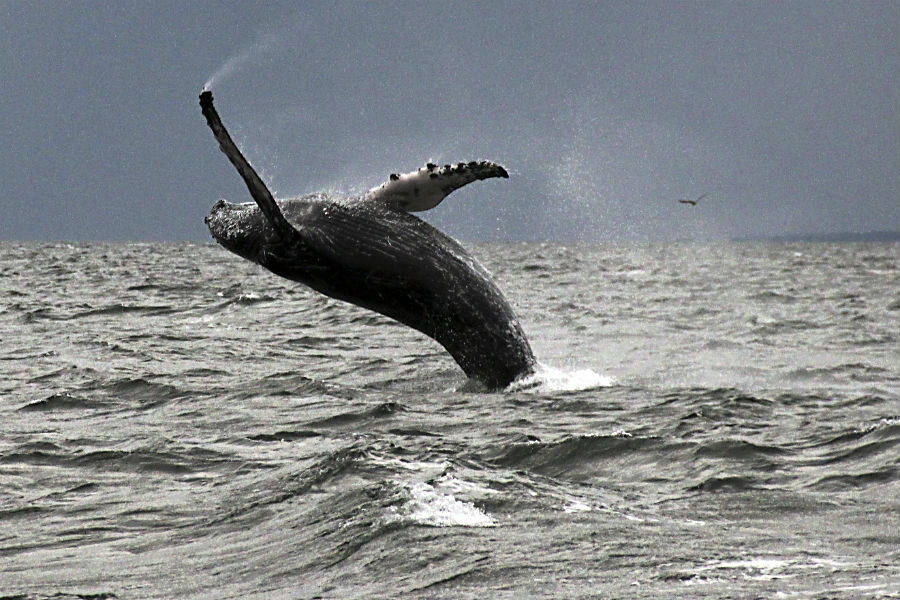Why have humpback whales returned to Long Island Sound?
Loading...
After a two decade-long hiatus, whales have reappeared on Long Island Sound, much to the excitement – and consternation – of boaters who have posted videos online of close encounters.
The sightings began in May when three belugas were spotted off Fairfield, Conn. and a minke whale was seen off Norwalk, Conn., reported the Associated Press. In recent weeks there have been reports of several humpback whale sightings as well.
Chris Curran of Darien, Conn. encountered a young humpback whale breaching the water about 20 to 30 feet from his boat on Saturday. He was with his son and his son’s friend at the time.
"I was having heart palpitations I was so excited," Mr. Curran said in an interview with the Associated Press. "The boys were fearful for their lives. They thought it was an orca. I was never concerned about it hitting the boat until that last incident then I got out of there fast."
Boater Daniel Lent also had a close encounter on Sept. 12 when he says he saw two humpbacks off the coast of Stamford, Conn. “I was following their blow holes’ spray and the disturbed water and then all of a sudden [one of the whales] breached 100 feet behind me. I got really scared that it could hit or crush my 27-foot boat. It was about the size of the boat,” he recounted to the Connecticut Post.
Due to the increase in sightings, state and federal environmental officials have issued warnings to boaters, urging them to stay at least 100 feet away from any whale, but farther if possible. Officials have also reminded the public that whales are protected animals.
Joe Schnierlein, research and university liaison for The Maritime Aquarium in Norwalk, Conn., believes that bait fish harvesting restrictions and a reduction in pollution-laden waters due to lack of rain have contributed to a large increase in bait fish. The prevalence of this food source has ultimately attracted whales back to the area.
Dr. Allison Tuttle, vice president of biological programs for the Mystic Aquarium, says the area of Long Island Sound is “considered part of the animal’s normal distribution pattern,” despite the rarity of sightings prior to late, reported local Conn. news organization, The Hour.
A joint study done by the World Wildlife Fund (WWF) and the Whale and Dolphin Conservation Society (WDCS) in 2007 indicated that rising water temperatures could cause whale species to “shift their distributions to remain within optimal habitat.”
However, it’s unclear whether this explains the recent sightings observed in Long Island Sound because “knowledge regarding specific habitat preferences and adaptive capacity [of many whale species] is virtually nonexistent,” says the study.








